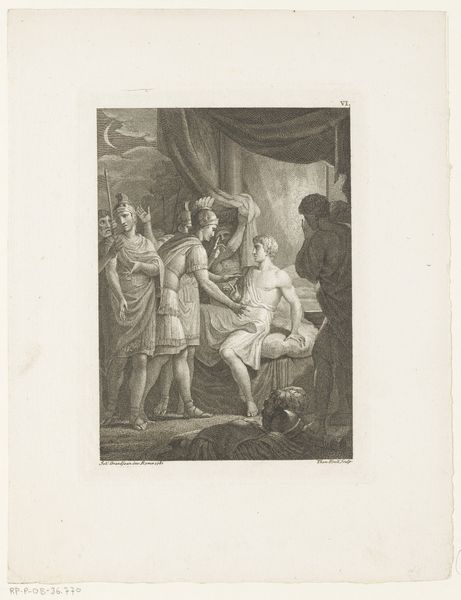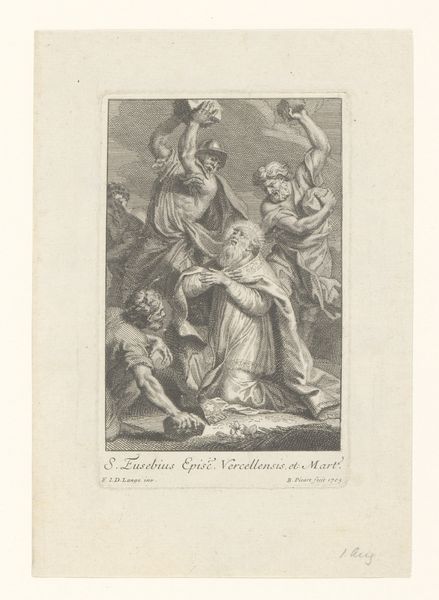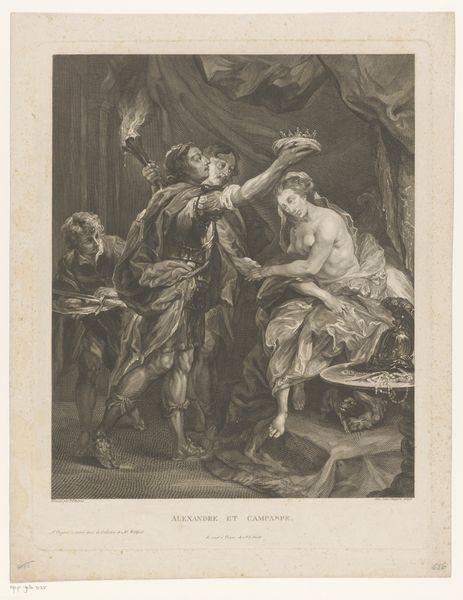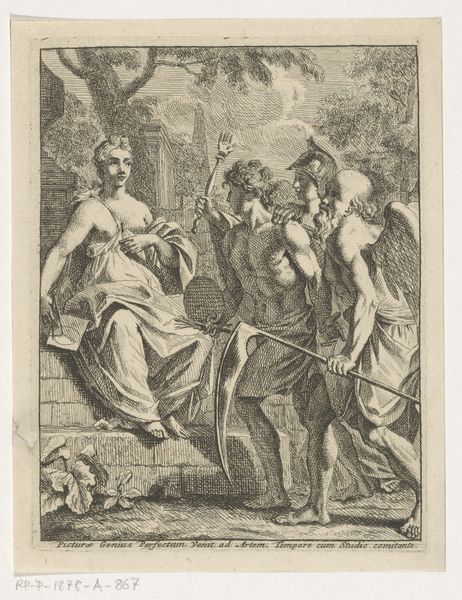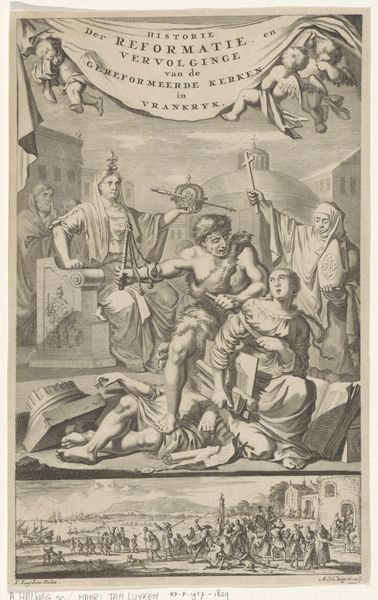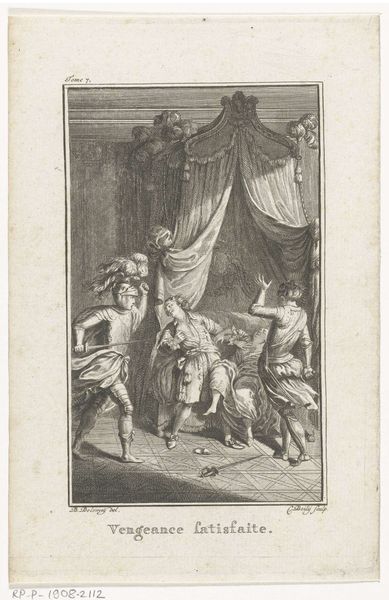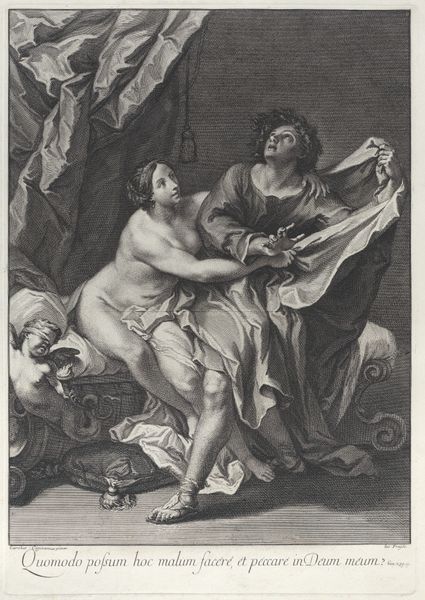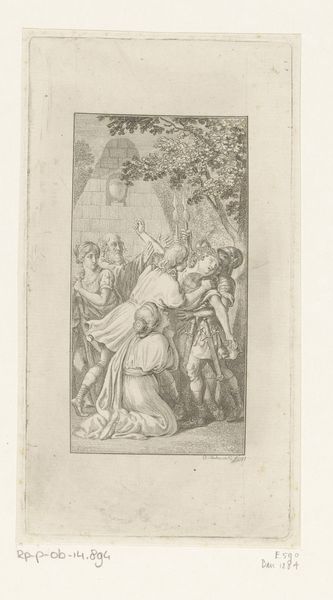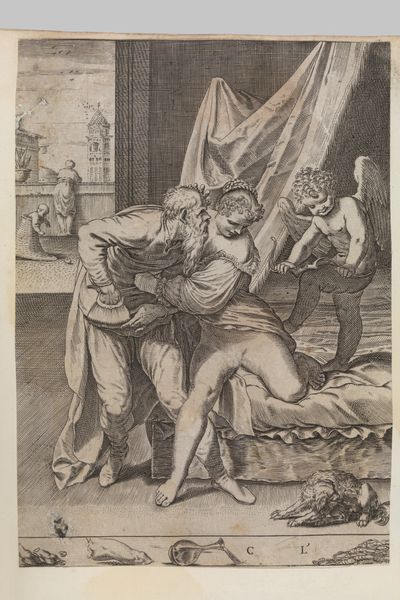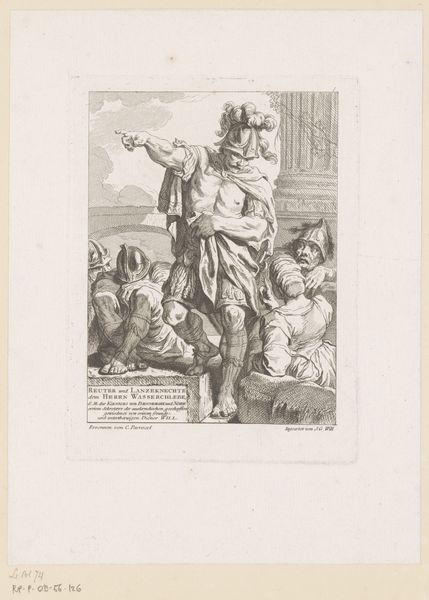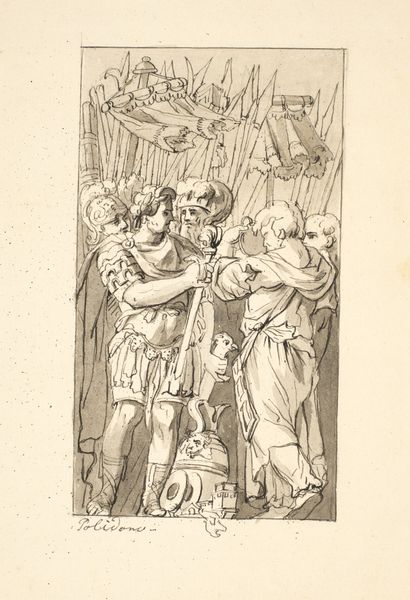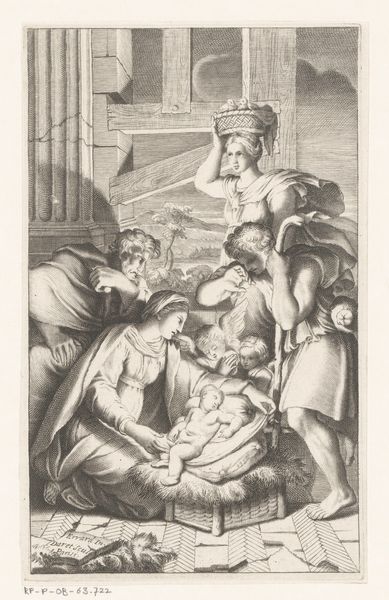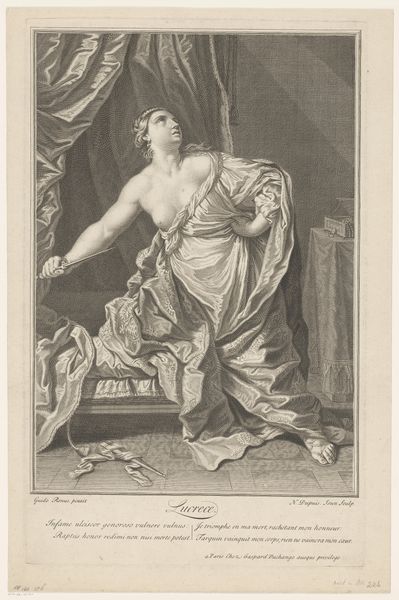
The Death of Lucretia, from Allen's "New and Impartial Roman History" 1797
0:00
0:00
drawing, print, etching, engraving
#
drawing
#
neoclacissism
#
narrative-art
# print
#
etching
#
figuration
#
history-painting
#
italian-renaissance
#
engraving
Dimensions: plate: 5 7/8 x 3 1/4 in. (14.9 x 8.3 cm) sheet: 7 1/8 x 3 13/16 in. (18.1 x 9.7 cm)
Copyright: Public Domain
This print of "The Death of Lucretia" was made by William Blake in 1797, using etching and engraving. Look closely, and you can see the dense web of tiny lines that create the image. Blake would have coated a copper plate with a waxy, acid-resistant substance. Then, he'd carefully draw through this coating with a sharp needle, exposing the metal beneath. Next, the plate was submerged in acid, which bit into the exposed lines, creating grooves. Finally, ink was forced into these grooves, and the plate was pressed onto paper. The result is this intricate, linear image. Consider the labor involved in this process, each line carefully placed by hand. This print was made for Allen's "New and Impartial History of Rome," a commercial venture. Blake's artistry was thus put in service to mass production, a fascinating intersection of artistic skill and the burgeoning print market of the late 18th century. It reminds us that even visionary artists like Blake were deeply enmeshed in the economic realities of their time.
Comments
No comments
Be the first to comment and join the conversation on the ultimate creative platform.
